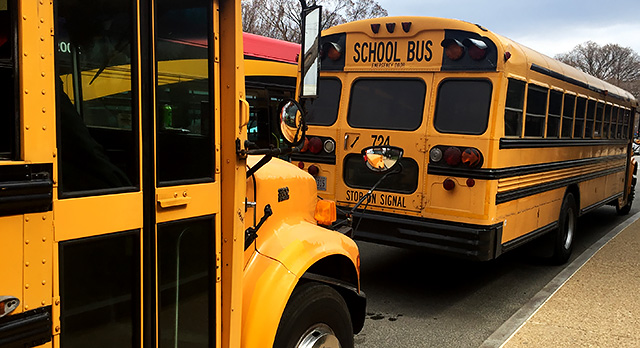Overcoming Language Barriers in Schools

(Photo by Jean Woloszczyk on Unsplash)
By Andrew Figueroa
“New New Yorkers” is the term used to describe foreign students who are new to the English language or to the United States. There have been many conversations and debates about the best methods for teaching these students, many of whom have language barriers. P.S/M.S 57 is a school in East Harlem that has a diverse student body with some who don’t speak English at all.
How does the school give these students the same education and opportunities as English speaking students? The elementary and middle school has 260 students who don’t speak English and they are placed in classes that have a teacher who is multilingual and can make sure they understand the work. The school has also created new strategies to ensure that the students aren’t held back.
The arrival of migrants to New York City has added more students who need additional language help. More than 60,800 new migrants have gone through the City’s shelter system since 2022, according to the Mayor’s Office of Immigrant Affairs (MOIA). Of these, says the MOIA, there have been “14,000 children enrolled in the City’s public schools through the Open Arms projects.”
Some ESL students never really attended school on a normal basis until they got to New York. Manhattan has 11.88% ESL students in the 2022-2023 school year with 53.42% in elementary school, according to the DOE’s Division of Multilingual Learners. A recent study showed that 66.19% of these students speak Spanish as a first language but there are other students who speak Russian, Chinese, Arabic and many other languages. Many of these students are now in Transitional Bilingual programs (10.20%) or are in Dual Language Bilingual programs (8.73%) and the majority were in English as a New Language Only program (78.94%). These programs are set up to help the students transition into the education system.
Since the school knows the system has many non-English speakers, the first step to helping these kids is hiring enough teachers that speak different languages, like Russian, Spanish, Chinese, and Patois. This year the school did not give an assessment test as it has done in recent years. Administrators say they don’t believe the test is all there is to the students. Instead the school evaluate students’ grade levels by testing them on listening, speaking, and reading.
It is a new school and environment for some of these kids. Other factors also affect how these New New Yorkers do in school. The principal has had to help students and their families adjust to New York City. “I saw a child with slippers on in the winter,” said the principal. M.S 57 has had parents and staff volunteer to donate clothes and food for the parents who are struggling to adjust to the new country and weather.
ENL classes, or English as a New Language, use different strategies to help non-English speakers get more practice. Parents can also take G.E.D. classes which the school helps them find. They have parent meetings to help parents stay on track with their kids. The principal believes this is important because it’s not just the kids that are a crucial part in their learning but the parents are too.
In the last few years the principal has helped provide after school and extracurriculars so parents don’t have to leave work early and the kids feel like everyone else and explore what they like to do. They have cheerleading, a drumline and are starting a school newspaper.
P.S/M.S 57 has modified the grading system according to the principal. Some things like tests and presentations might be worth fewer points because students are at different levels. The school may give less homework but makes sure that work which is given out is more impactful.
When sending the kids off to high school P.S/M.S 57 tries to help send them to dual language schools like Esperanza High School which takes a lot of Spanish speaking students. This is the process that this school follows to help ensure that “New New Yorkers” get set up for the future and get the help they need transitioning to a new place and education system.
Saved under Featured Slide, News
